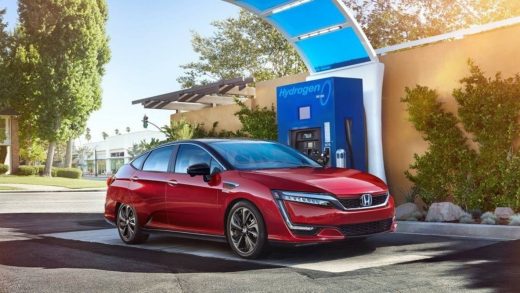
Canada’s Environment and Climate Change Minister Stephan Guilbault recently announced that as of 2035, new vehicles sold in Canada will be zero-emission vehicles (ZEVs) — electric, fuel cell, and plug-in hybrid. He also announced that Canada would be supporting the installation of thousands of new electrical charging stations.
With over 26 million personal vehicles on the road accounting for more than 10 per cent of Canada’s greenhouse gas emissions, it’s a sensible move for two reasons. First, it helps to meet our emission reduction target — not that big a deal in absolute terms — giving us the moral high ground when petitioning large emitters to follow suit; and second, it gives us a head start on the inevitable day we can no longer burn fossil fuels.
Like many federal announcements, particularly the closer one gets to an impending election, this one contains a little bonus for you and me — a $5,000 subsidy when we buy our ZEV. Not only that, these ZEVs will be considerably cheaper to operate and maintain than our old gas guzzler, we are told by federal experts.
The vehicle part of this is pretty straightforward. The increasing cost and decreasing availability of fossil fuel will drive the transition; perhaps not on the government’s timetable because of the global nature of both the problem — climate change — and the solution, but it’s inevitable.
The fuel part of this is a little more complicated. The announcement was not clear whether the government of Canada will be constructing, paying for the construction or subsidizing the private sector to create tens of thousands of charging stations. Since owners can charge their vehicles at home, the economics of private networks are uncertain. Of course a new set of operating and safety standards will be required. Maybe we need a new PetroCan — or should I say, ElectroCan.
These stations will be powered by the various public utilities in each province and territory. Canada is committed to a carbon neutral electricity grid by 2035. This means conversion of about 20 per cent of our current capacity to renewables. All new generation, including the electric vehicle load, will also have to be carbon neutral. This may not be easy for some utilities to achieve. And of course the price for electricity varies considerably between jurisdictions.
So far, the price I pay to power my ZEV is considerably lower than for a gas-burner. That won’t last long. As the petroleum purveyors never tire of reminding us, even before the carbon tax, taxes make up a large chunk of price per litre. Those taxes finance the transportation infrastructure, road construction, maintenance and so forth. In the future the price at the (electrical) pump will be the retail cost of electricity — whatever that is where you live — operating costs and profit to the charger station operator, and government taxes so you will have a road on which to drive your new machine.
Of course, if we are to replace 20 per cent of existing demand with renewables, and meet ZEV demand and demand created by converting the many non-vehicle uses of fossil fuels, then we will need a much more robust transmission grid to shunt power between jurisdictions “when the sun don’t shine and the wind don’t blow.”
None of these considerations are fatal, but they need to be worked out quickly and in partnership with the provinces who will ultimately fuel the system. Cooperative federalism hasn’t been a hallmark of the current government.
If there’s some unease it’s that announcements of this kind — electric vehicles, carbon neutral electrical grid, carbon tax — focus on the least important element of our climate change strategy, mitigation. For us, contributing 1.6 per cent to world greenhouse gas emissions while occupying a large swathe of the northern latitudes that will likely be disproportionately affected by climate change, adaptation ought to be our urgent priority. Big announcements of relatively small gains tends to take our eye off that ball.
Yes, we do have a climate change adaptation strategy. But judging from Canada’s adaptation programs, our federal bureaucrats and their masters appear to believe that many small projects — generating politically attractive many small announcements — are all we need.
This totally misreads the scale of the impacts we are about to face, how quickly they will be upon us (and are already, to some extent), the critical touch-points for adaptation (principally water), the level of effort, resources, time and co-operation adaptation will require.
While mitigation can be accomplished through the passing of laws; adaptation — at least critical regional-scale adaptation — cannot. Bravo to Canada for its ZEV initiative. Now let’s get on with the big, tough, expensive job of adaptation.
Norman Brandson is the former deputy minister of the Manitoba departments of environment, conservation and water stewardship.


